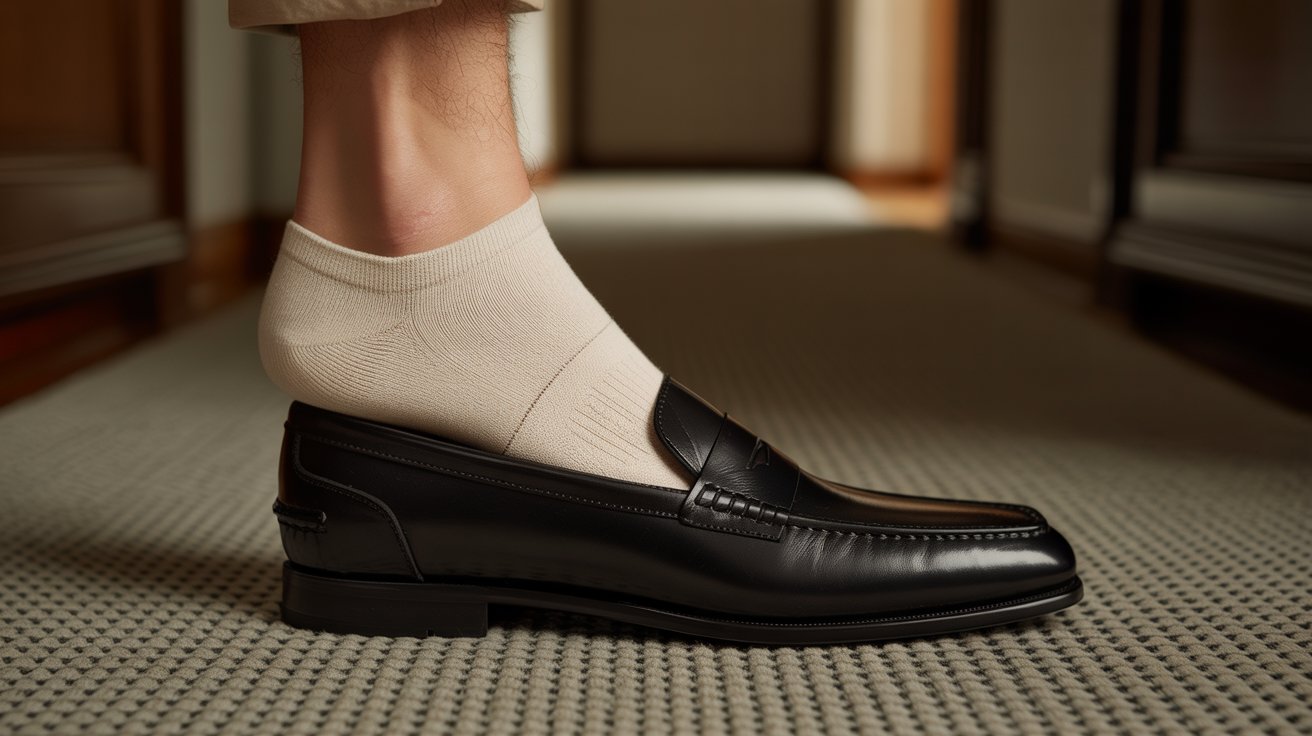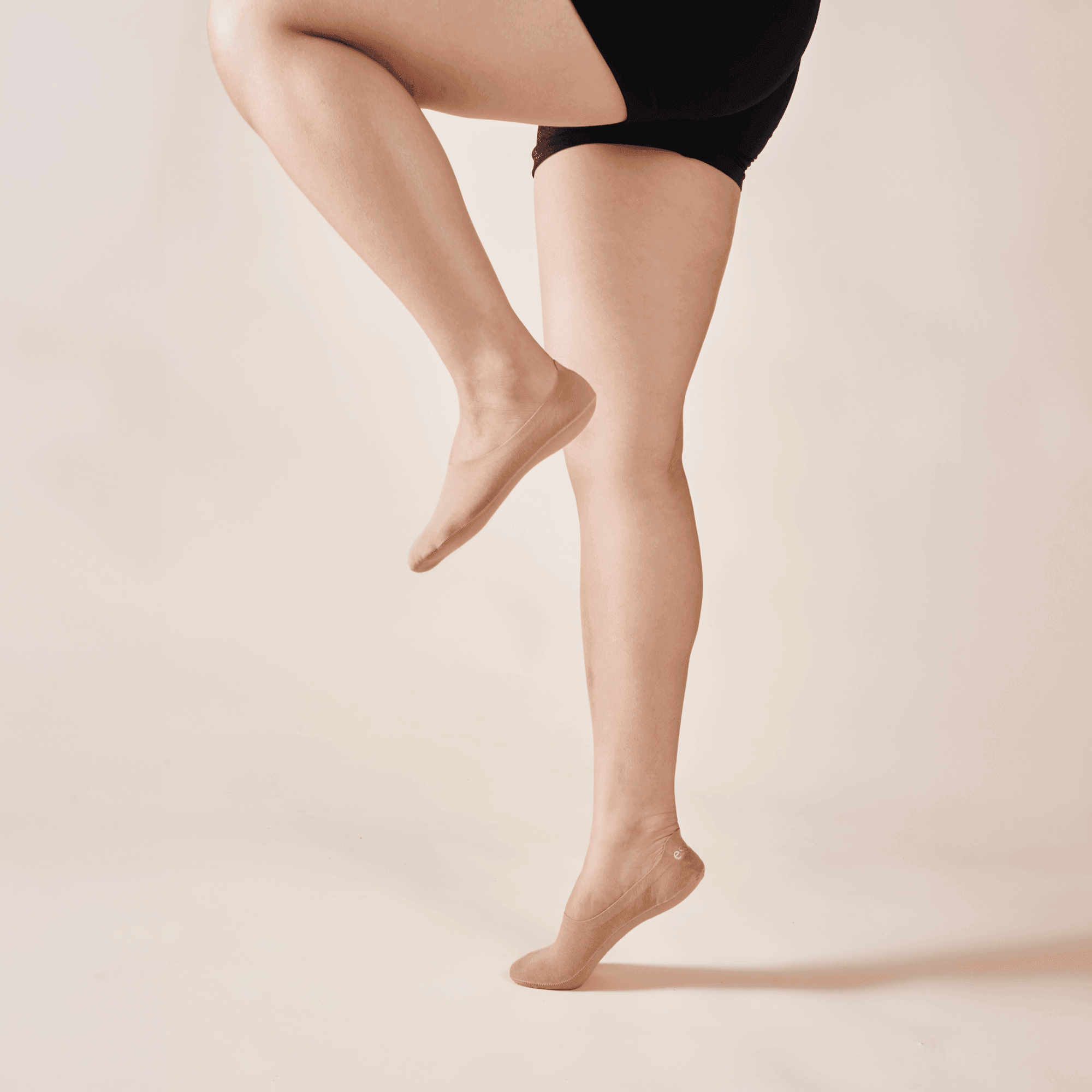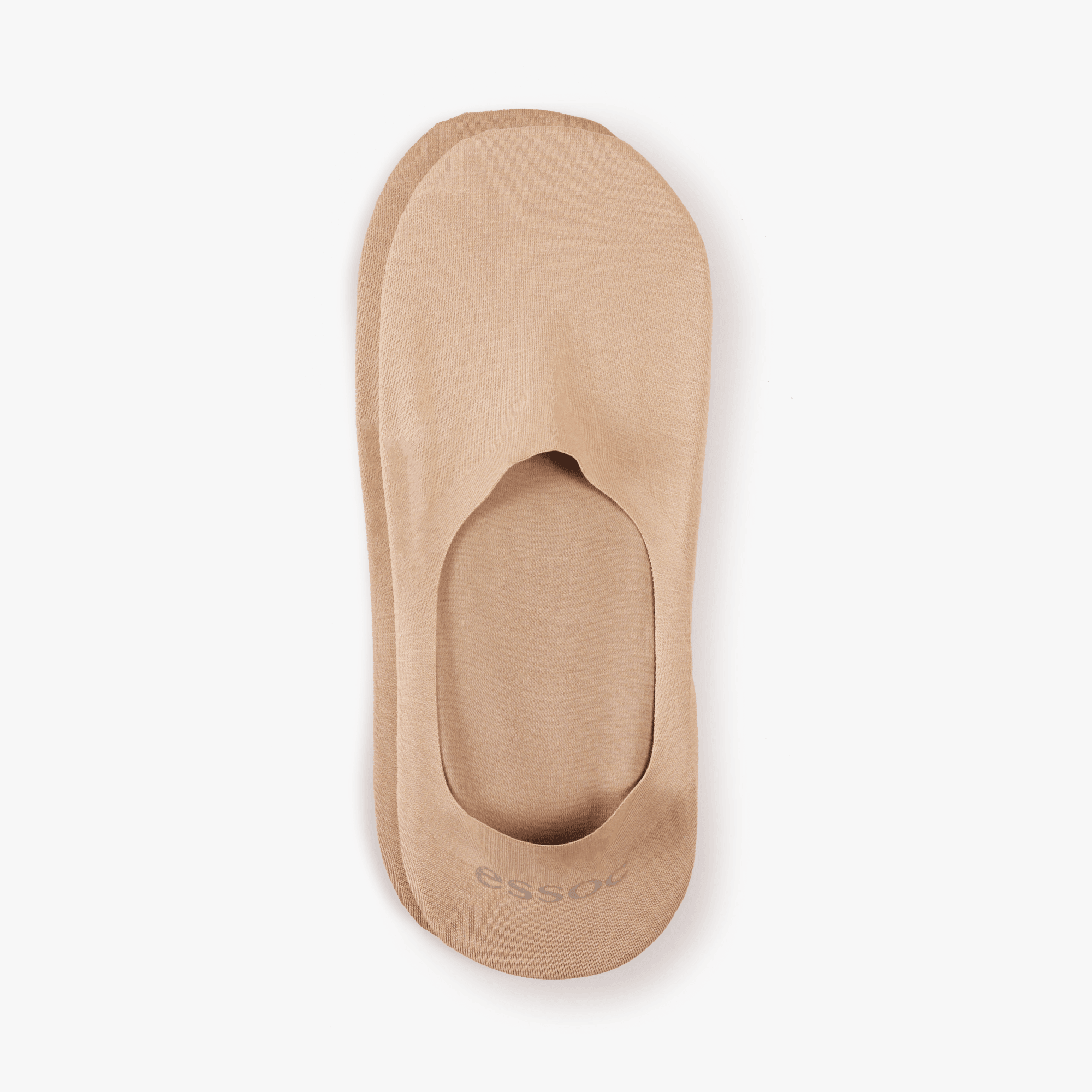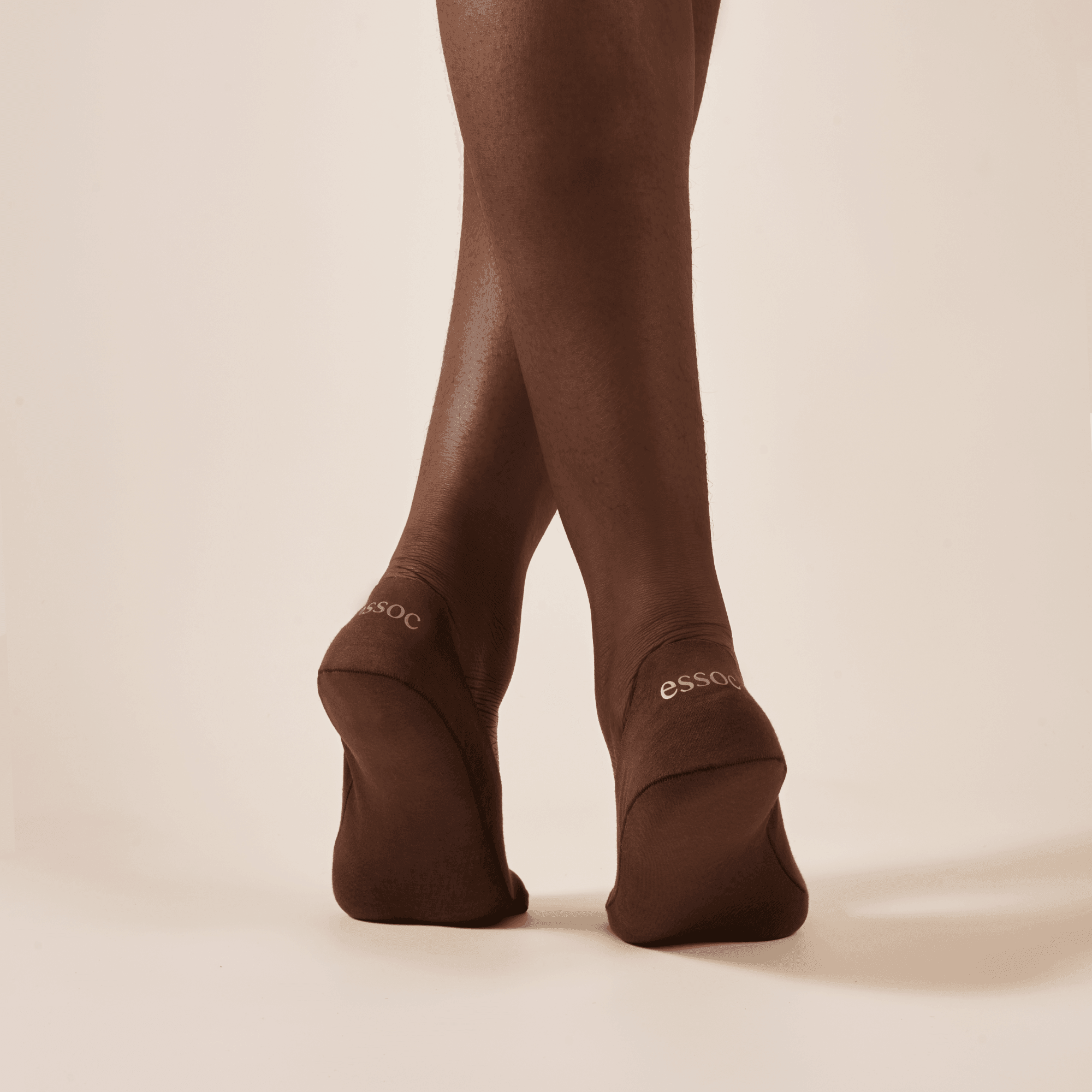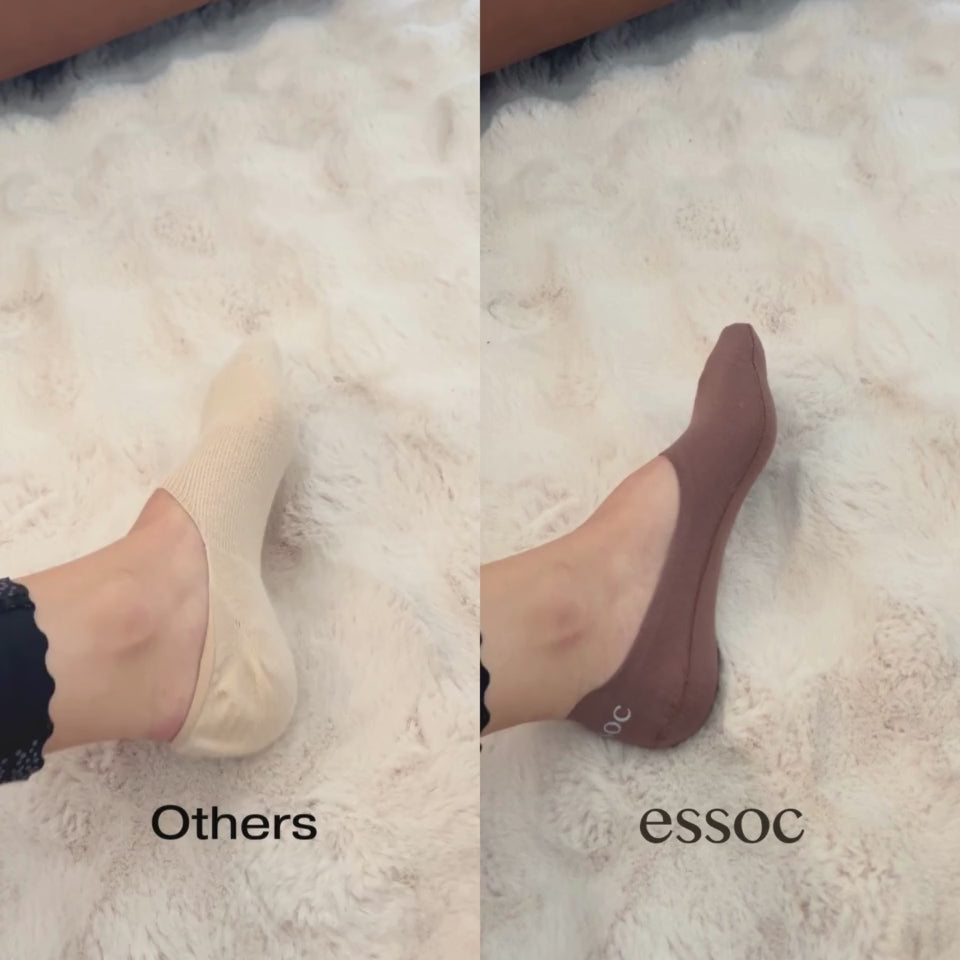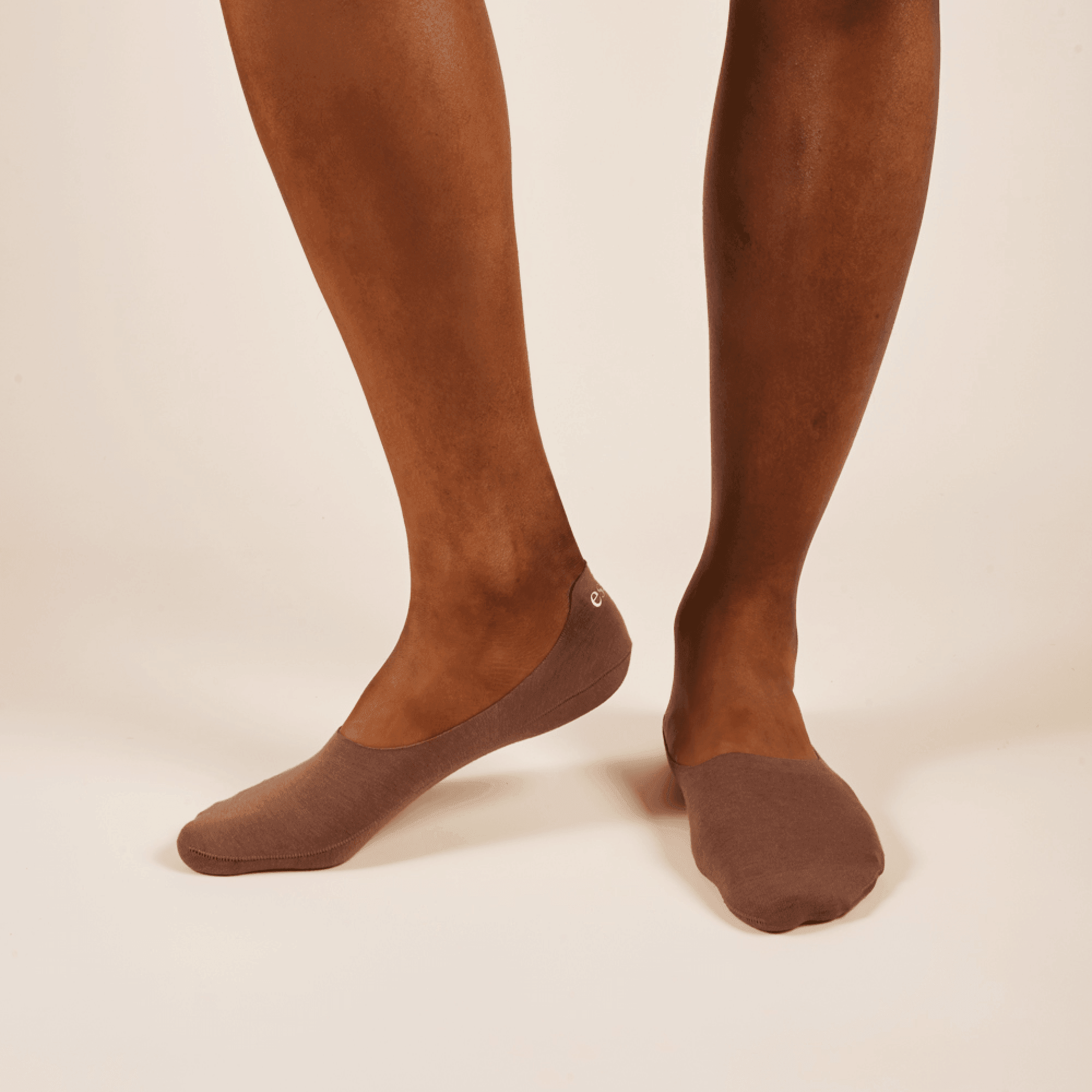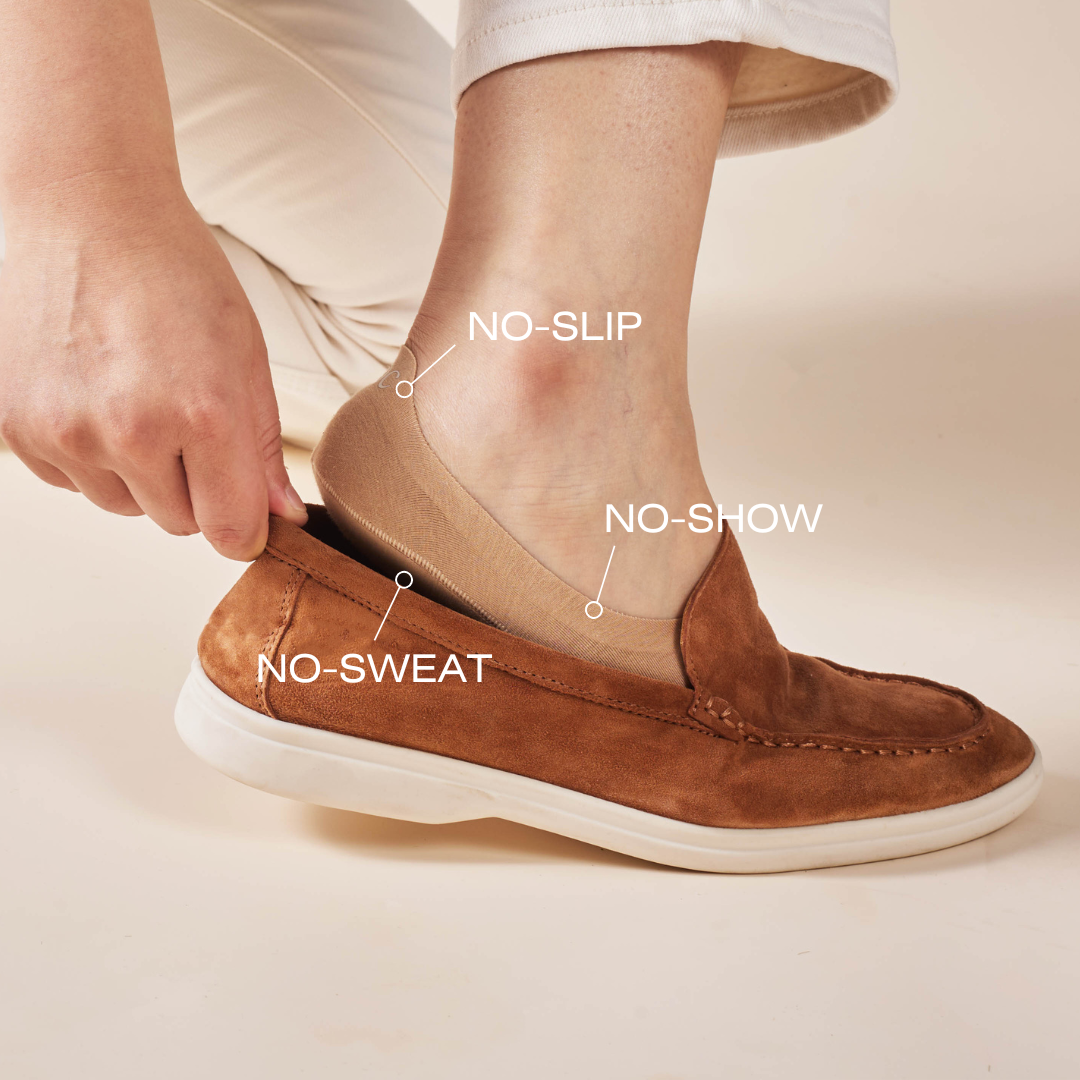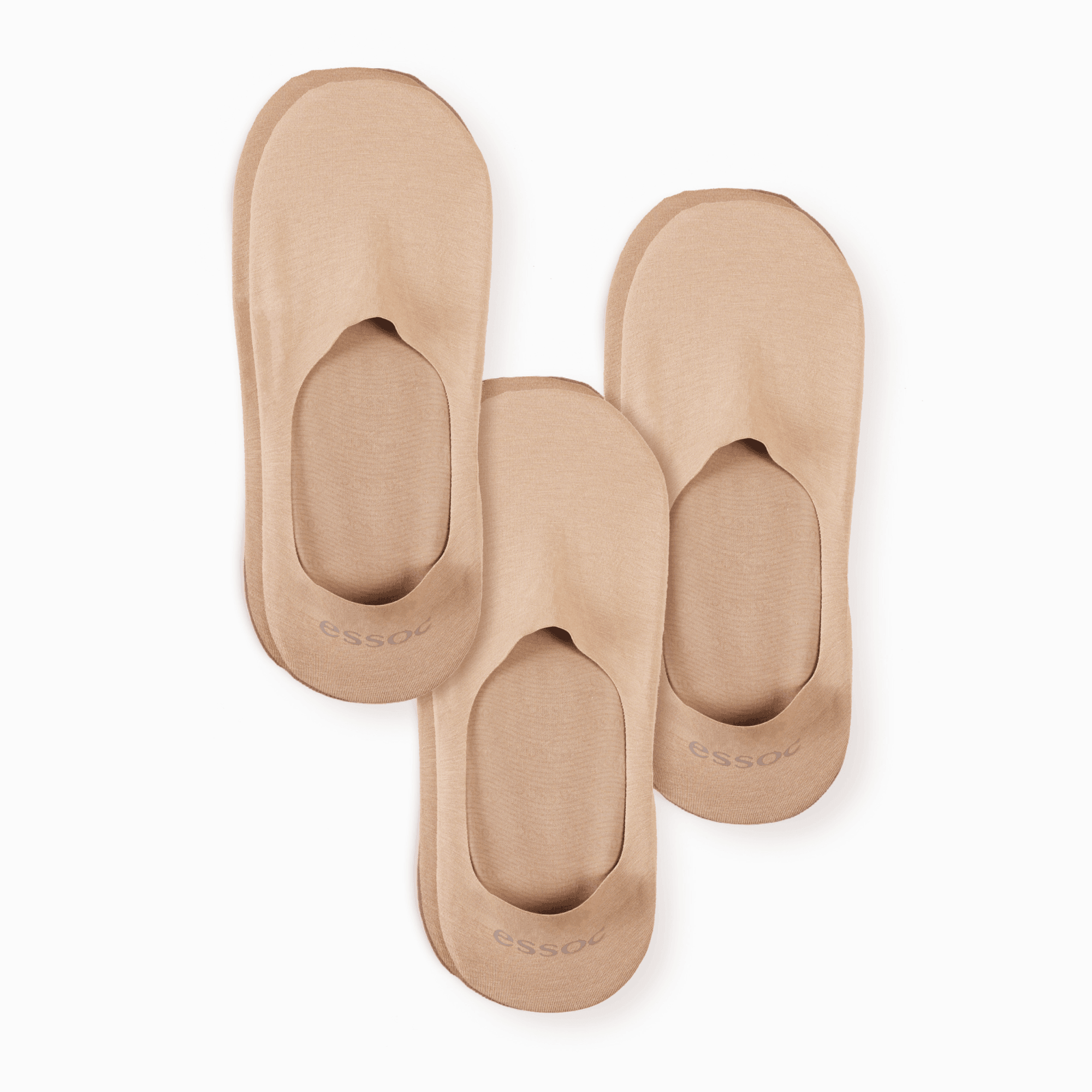Ill-fitting no-show socks remain one of the leading causes of slipping, bunching and irritation at the heel. Finding the right size no-show socks for men combines precise foot measurement, clear size-chart guidance and essential performance features that keep your Essoc socks secure and comfortable. In this guide, you’ll discover why fit matters, how to measure correctly, which anti-slip technologies and materials work best, how to pair socks with different footwear, and simple care steps to extend wear life.
Why Does Choosing the Right Size Matter for Men’s No-Show Socks?
Choosing the correct sock size defines the boundary between secure, all-day comfort and constant readjustment. When socks match foot dimensions precisely, they stay in place, maintain hygiene and preserve your “sockless” style without compromising support.
Importance of Proper Sock Fit
Choosing the right sock size is crucial for all-day comfort and preventing issues like bunching and slippage. Socks that fit well stay in place, maintain hygiene, and allow for a "sockless" style without sacrificing support. Ill-fitting socks can lead to discomfort and require constant readjustment.
How Does an Incorrect Size Cause Slipping and Bunching?
An oversized no-show sock can slide down into the shoe, while an undersized sock constricts and shifts under pressure. Too much stretch at the cuff or loose dimensions at the heel create movement, and that motion triggers friction, which in turn leads to slippage and fabric bunching inside the shoe. Understanding this mechanism highlights the need for precise sizing before exploring anti-slip features.
What Are the Comfort and Foot Health Benefits of a Proper Fit?
A properly sized no-show sock delivers consistent pressure distribution around the arch and heel, reducing hotspots and preventing blisters. It wicks away moisture evenly, lowers the risk of fungal growth and supports natural foot alignment. By eliminating friction points, a precise fit enhances day-long comfort and contributes to overall foot health without sacrificing that invisible finish.
How Do You Accurately Measure Your Foot for Men’s No-Show Socks?
Accurate foot measurements ensure your chosen sock size aligns with your shoe size and foot shape. By combining length and width data with a brand’s size chart, you eliminate guesswork and guarantee a secure fit from heel to toe.
What Is the Step-by-Step Method to Measure Foot Length and Width?
- Place a blank sheet of paper on a hard, flat floor surface.
- Stand with full weight on the paper, heel flush against a wall.
- Trace the outline of your foot with a pencil held vertically.
- Use a ruler to measure the longest toe to the back of the heel in inches or centimeters.
- Measure the widest part of the ball of your foot across the illustration.
- Record both length and width and compare with Essoc’s size chart.
These steps remove ambiguity and lay the groundwork for selecting the ideal sock size that prevents slipping and enhances comfort.
How Do You Use a Sock Size Chart to Match Your Shoe Size?
Below is a conversion table mapping common US, UK and EU shoe sizes to Essoc no-show sock sizes. Use your measured foot length to confirm or adjust relative to your shoe size.
|
US Shoe Size |
Foot Length (in) |
Essoc Sock Size |
|---|---|---|
|
6–8 |
9.25″–9.75″ |
Medium |
|
8.5–10 |
9.75″–10.25″ |
Large |
|
10.5–12 |
10.25″–10.75″ |
X-Large |
Matching measurement to chart values ensures a sock size that fits snugly without constriction and sets you up to explore advanced non-slip features next.
What Should You Do If Your Foot Size Falls Between Two Sock Sizes?
When foot dimensions rest between two chart entries, sizing up provides extra room for comfort, whereas sizing down increases firmness to minimize slip. Consider your activity level—athletic use favors a tighter fit, while casual wear tolerates slight extra space. Refer to your personal preference and Essoc’s fit guarantee when making the final choice.
What Key Features Ensure a Non-Slip, Comfortable Fit in Men’s No-Show Socks?
A combination of targeted grip points, supportive heel design and well-constructed cuffs transforms a basic sock into a performance accessory. These structural elements together prevent slippage, maintain sock shape and protect sensitive foot areas.
How Do Silicone Heel Grips Prevent Socks from Slipping?
Silicone heel grips adhere to the back of your foot, creating friction against the shoe’s interior to hold the sock in place. Embedded in the heel pocket, these grips resist downward movement and remain effective even through multiple wears. Their durable, non-toxic material ensures long-lasting adhesion that directly combats slipping in every stride.
Why Is Heel Pocket and Arch Support Important for Fit?
A Y-shaped heel pocket cradles the Achilles tendon and shapes the sock to your foot’s contours, while built-in arch support gently compresses the midfoot for stability. The combined effect locks your foot into place, distributes pressure evenly and reduces sock migration. This engineered support complements precise sizing to maintain comfort under dynamic movement.
How Does Elasticity and Cuff Construction Affect Sock Snugness?
Quality no-show socks use a graduated elastic band around the cuff that grips the foot without pinching. This band’s elasticity returns to its original shape after each wear and wash, preserving a snug fit around the ankle. Proper cuff construction balances hold with breathability, preventing both slippage and circulation restriction.
Which Materials Are Best for Men’s No-Show Socks for Comfort and Performance?
Material selection dictates moisture management, breathability and durability, all of which shape the daily performance of no-show socks. Choosing the right fiber blend optimizes sweat control and maintains stretchy, form-fitting comfort.
Materials and Performance in Socks
The choice of materials significantly impacts the performance of no-show socks, influencing moisture management, breathability, and durability. Breathable cotton blends offer comfort and stretch, while merino wool and synthetic fabrics enhance moisture-wicking and durability, which is essential for active lifestyles.
What Are the Benefits of Breathable Cotton Blends?
Breathable cotton blends combine soft natural fibers with a small percentage of spandex or elastane for stretch and shape retention. The cotton component absorbs moisture and allows airflow, while the stretch fiber ensures the sock conforms to your foot. This synergy yields everyday comfort, gentle compression and resilient fit.
How Do Merino Wool and Synthetic Fabrics Enhance Moisture-Wicking and Durability?
Merino wool naturally wicks sweat away from the skin and resists odor, while synthetic fibers like polyester and nylon offer high durability and quick-drying performance. A blend of merino and technical yarns creates a sock that regulates temperature, repels moisture and stands up to frequent wash cycles. This advanced fabric combination supports active lifestyles and extends sock lifespan.
How Do You Match Men’s No-Show Socks to Different Types of Footwear and Style?
Selecting the correct cut and profile for your sock ensures both invisibility and compatibility with shoe design. Tailoring sock height and shape to footwear maximizes comfort and maintains a polished, “sockless” look.
Which No-Show Socks Work Best with Loafers and Boat Shoes?
Ultra-low-cut no-show socks that end just below the collar of loafers and boat shoes provide full coverage without peeking. A deep heel pocket and reinforced cuff hold the sock in position, ensuring it remains hidden while offering sweat control in slip-on designs.
What Are the Best Socks for Sneakers and Casual Shoes?
For sneakers and casual lace-ups, a mid-cut no-show sock with extended arch support and thicker toe seam protection balances concealment with cushioning. The extra material across the midfoot absorbs shock and prevents chafing during extended wear.
How Can You Achieve the “Sockless Look” with No-Show Socks?
To perfect the sockless appearance, choose a sock color matching your skin tone or shoe interior, and ensure the cuff sits just below the ankle bone. Pair with cropped trousers or rolled cuffs to maintain clean lines, then step confidently without visible sock edges.
How Should You Care for Men’s No-Show Socks to Maintain Fit and Comfort?
Proper laundering and timely replacement preserve elasticity, grip features and fabric integrity. Consistent care practice prevents premature wear and retains the precise fit you established through measurement.
What Are the Best Washing and Drying Practices?
- Turn socks inside out to protect heels and grips.
- Wash in cold water on a gentle cycle with mild detergent.
- Avoid fabric softeners, which degrade elastic fibers.
- Air dry flat or hang by the cuff—high heat shortens elastic life.
Adhering to these practices ensures elasticity and silicone grips remain intact, helping your socks stay secure and comfortable.
When Is It Time to Replace Your No-Show Socks?
Replace socks when heel grips become thin or detach, elastic cuffs lose resilience, or fabric shows holes and thinning. Persistent slipping after proper measurement signals material fatigue. Renewing socks at these signs restores fit precision and upholds foot comfort.
What Are the Common Questions About Men’s No-Show Sock Sizing and Fit?
Even seasoned no-show sock wearers encounter sizing and fit questions that influence comfort and style. Here are definitive answers to frequent concerns.
How Do I Find My Men’s No-Show Sock Size?
Measure your foot length from heel to longest toe and consult the Essoc men’s no-show sock size chart, which correlates US, UK and EU shoe sizes to Medium, Large and X-Large options. This process guarantees a sock size that conforms to your actual foot dimensions.
Why Do Men’s No-Show Socks Keep Slipping Off?
Socks slip when the size doesn’t match foot shape or when heels lack effective silicone grips and supportive heel pockets. Choosing the proper size, reinforced grips and quality elastic cuffs removes the primary causes of slippage.
Are No-Show Socks One Size Fits All?
No-show socks are not universally sized—differences in foot length, width and arch height require at least three distinct sock size ranges. Essoc offers multiple sizes to ensure each foot shape achieves a snug, non-slip fit.
What Material Is Best for Men’s No-Show Socks?
Blends of breathable cotton with spandex provide daily comfort and stretch, while merino wool-synthetic combinations excel in moisture-wicking, odor resistance and durability for active use. Select the material profile that matches your activity level and climate.
Ill-fitting socks compromise comfort and style, but understanding precise measurement, size-chart conversion and performance features solves slipping and bunching once and for all. By applying these fit guidelines and choosing Essoc’s quality materials and non-slip technologies, you’ll achieve invisible comfort that lasts through every step. Ready to experience the Perfect Fit Guarantee? Explore our men’s no-show sock collection at essoc.shop and step into effortless confidence.


